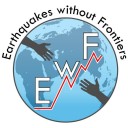People Power
Kate Ravilious
Data gathering needn’t always involve expensive instruments or exotic fieldtrips. Here in resource strapped Nepal, seismologists are tapping into the power of local people to collect information that could ultimately save many lives.
In places like California and Japan shake-maps, as they are known, are commonplace. Houses built on thick layers of sediment will be rattled much more than houses situated on granite bedrock for example. Detailed knowledge of local geology, plus dense arrays of instruments enable geologists to accurately predict which areas are going to wobble most when an earthquake arrives. This information ensures that funding can be targeted and spent in the areas which need it most. But here in Nepal the network of instruments is sparse and without these shake-maps it is very hard to know how best to spend the very limited funds and increase earthquake resilience in this earthquake-prone land.
Today I visited Nepal’s National Seismological Centre in Kathmandu. Lok Bijaya Adhikari took me to see their accelerometer – an instrument that measures the acceleration produced by an earthquake and tells you literally how much the ground moved. I enjoyed making my own very mini earthquake by jumping up and down, and watching the light come on, registering that the ground had moved. Countries that can afford a good network of accelerometers can use the data gathered during small earthquakes to assess which parts of a city shake most. But Nepal has just seven accelerometers to cover the entire country – not nearly enough to gather the local detail required to produce a shake map.
Instead Adhikari and his colleagues are tapping into a much cheaper and more plentiful resource: gossip. When something exciting happens we all love to tell our version of events. Last year the National Seismological Centre added a ‘Did you feel it?’ button to their local earthquake reports webpage (http://www.seismonepal.gov.np) and Facebook site (https://www.facebook.com/pages/National-Seismological-Center-Department-of-Mines-and-Geology-Nepal/334399900030441). People are invited to submit their experience of an earthquake – how intense the shaking felt, what kind of things fell over, how long the shaking went on for, and so on.
Obviously personal accounts are subjective and nowhere near as accurate as an accelerometer, but providing there are enough accounts the exaggerated answers are smoothed out. “We can gain some information on how the ground responds and estimate which local areas are most at risk,” Adhikari told me.
Given that Nepal experiences around five earthquakes of magnitude 4 or greater every month, there are plenty of opportunities for people to submit their experiences. And the explosive rise in mobile phone uptake and interest in social media in Nepal over the last five years or so suddenly make this a viable and very powerful method of gathering data. Now all Adhikari needs to do is spread the word…
Kate Ravilious (http://www.kateravilious.net) is a science journalist who is following the work of EwF. She is visiting Nepal thanks to the generosity of a travel grant awarded by the European Geosciences Union (http://www.egu.eu).







So with so many mobile phones at large in Nepal, can’t the accelerometers in them somehow be used as well as the “gossip”? e.g. http://ishakeberkeley.appspot.com/mission. Even if automatic texting were not possible, could people be encouraged to read off accelerations themselves and submit them in their “Did you feel it?”.